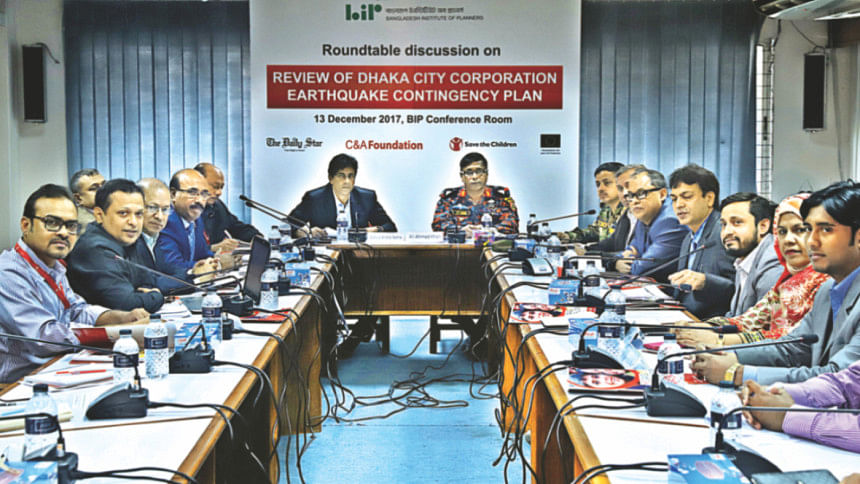Adopt new earthquake contingency plan

Sheer lack of coordination and inadequate trained manpower are the primary hurdles in implementing disaster management plans in the event of a devastating earthquake in the capital, said experts and officials concerned at a discussion yesterday.
M Abu Sadeque, director of House Building Research Institute, said, “The national strategic plan on disaster management for the period of 2010 to 2015 was not even corroborated with a disaster-specific action plan and it expired on paper.”
The Daily Star, Save the Children and C&A Foundation jointly organised the discussion titled “Review of Dhaka City Corporation Earthquake Contingency Plan” at Bangladesh Institute of Planners (BIP).
In 2009, the government prepared the contingency plans under its Comprehensive Disaster Management Programme (CDMP) for more than 20 government organisations, but without due participation of the organisations, Sadeque, who has been working on earthquake disaster management for over three decades now, also said.
Besides, the contingency plans were not consistent with the national plan, he said. “As a result, the contingency plans have remained out of exercise and implementation.”
Another five-year national plan on disaster management for the period of 2016 to 2020 is going to be formulated soon, Sadeque said.
Hasiba Jahan, town planner of Dhaka South City Corporation, complained that although they made official requests to the CDMP two times with the intention to be involved in the preparation of the contingency plan for areas under the city corporation, the CDMP did not ensure their greater involvement.
Dr Tariq Bin Yousuf, superintending engineer for environment, climate and disaster management of Dhaka North City Corporation (DNCC), said the DNCC has been working on disaster management since 2011 and as part of implementing the earthquake contingency plan, they are going to set up warehouses to store search and rescue tools in all five zones in Dhaka North city area within the next month.
Prof Akter Mahmud, general secretary of Bangladesh Institute of Planners, said at least a dozen government organisations said that they did not have the manpower required for disaster management.
Citing CDMP, he said in the event a 7.5 magnitude earthquake strikes Dhaka city, 30,599 million tonnes of concrete debris could be generated from 72,000 collapsed buildings and it would take 122 crore truckloads to remove the debris.
Lt Col Raju Ahmed of Operations and Plan Directorate at the Armed Forces Division said they hold regular drills on earthquake disaster management as per their contingency plan with government organisations, but the organisations lack awareness on the issue.
Ashraful Islam, project director of Dhaka detailed area plan (DAP), said risk reduction measures taken before a disaster are much more important than post-disaster management responses.
Dhaka city does not have sufficient open space for dumping the enormous amount of debris that might be produced after a major earthquake, he observed.
Satya Brata Saha, additional secretary to the disaster management and relief ministry, said even though the Fire Service and Civil Defence manages disaster, it is operated under the home ministry -- a fundamental administrative inconsistency.
Dr Khurshid Zabin Hossain Taufique, director of Urban Development Directorate; and Brigadier General Ali Ahmed Khan, director general of Fire Service and Civil Defence; spoke among others.

 For all latest news, follow The Daily Star's Google News channel.
For all latest news, follow The Daily Star's Google News channel. 



Comments